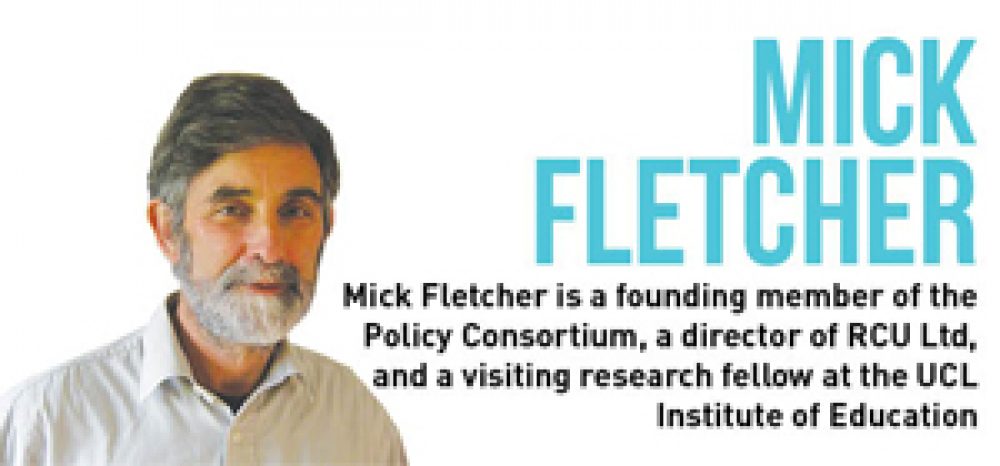The latest announcement on simplifying funding, ‘A New Streamlined Funding System for Adult Skills’ represents a small step forward.
There is clear evidence that colleagues at SFA and BIS have listened to the sector and have found, like all new brooms before them, that while everyone will buy the idea of simplification in theory its practical application is fraught with difficulty. They note in particular the inevitable trade off between simplicity and fairness and the real danger of unintended consequences.
The result of this listening is well illustrated by the growing size of the rates matrix – in many ways the centrepiece of the simplification proposals.
The initial idea floated in the consultation document in 2010 was to have just nine rates – qualifications could come in three sizes (Award, Certificate and Diploma) and three cost bands (cheap, medium and expensive). This was rapidly realised to be too simplistic and replaced by a 20 cell matrix; Units were added to give four sizes of qualifications and the cost bands were increased to five.
The current proposal doubles this to 40 cells – 5 cost bands and eight sizes of qualification – but it is still not clear that this is the end of the road.
The paper leaves open the question of an additional cost band for the most expensive programmes; and more importantly the model does not yet cover all FE provision. According to the paper there is more work needed on how basic skills is to be treated and how the model is to apply to apprenticeships, hardly trivial matters.
Although it does not highlight the fact more work is also needed to accommodate A levels and programmes of Access to HE (unless the assumption is that the withdrawal of grant funding for over 25s at level 3 will kill this work off entirely)
The steadily increasing complexity of the proposals (perhaps why they are now called ‘streamlined’ rather than ‘simple’) is partly a reflection of reality but there are in addition some clear own goals. The greatest amount of unnecessary complexity is of course caused by the illogical separation of the FE world into pre and post-19 sectors.
It would not be so bad were the two departments and their agencies not determinedly pulling in opposite directions with DfE and YPLA looking for a stable funding system that reflects providers’ costs while BIS and SFA prefer a more turbulent framework where central agencies manipulate prices.
Indeed had BIS really wanted to simplify funding it might have looked more closely at the real simplification inherent in Alison Wolf’s proposals – a fixed sum for full time students with a very limited set of price bands.
More complexity however derives from the determinedly centralising approach of BIS officials despite all the ministerial rhetoric about setting institutions free. Even in a document on funding simplification BIS / SFA cannot resist contemplating separate rates for large employers, or complicating achievement funding (itself unnecessary) by paying half of it for those who gain employment – but only for a specified subset of students.
The centralising impulse is illustrated most tellingly however by the move to base rates on credit or learning time rather than guided learning hours which reflect teaching time.
It is inherently illogical because it is teaching time that incurs costs not learning time and a model based on learning time would have an inbuilt bias towards those subjects and those tudents best able to cope with a large element of undirected private study.
The argument advanced for credit however is that GLH is not regulated.
To the evident horror of those in Whitehall the basis for funding FE up to now has reflected professional practice across the sector; local judgements about how much support learners need rather than the theoretical assumptions of a few designers at the centre.
A concern to regulate rates mirrors the increasingly detailed regulation of eligibility also being developed by BIS at the same time as talk of new freedoms.
The suspicion grows that SFA and BIS know that a funding system based on the QCF framework does not reflect the complexity of the FE world.
Their plan however could be to use a simplified funding system to force the simplification of provision; a system that providers see as responsive but the centre just sees as messy and outside its control. If this is true then learners are sure to be the losers.
Mick Fletcher is a
consultant on Further Education









I think 19+ A-levels will be OK, they fit quite nicely into the 13-24 Credit Cert band. Lose out a bit on day time provision, but evening ones will gain (assuming that’s one bit of simplicity they DO introduce!). Access I’m really worried about though, a mid sized dip will generate just less than the equivilent of 450 SLN_GLH (it’s Saturday morning I don have te figures in front of me!!) but the next band up is over 700, so it won’t go in there. This means we’re looking at a 20% cut in funding from the current 520 SLN_GLH, even for the 19-23 year olds…